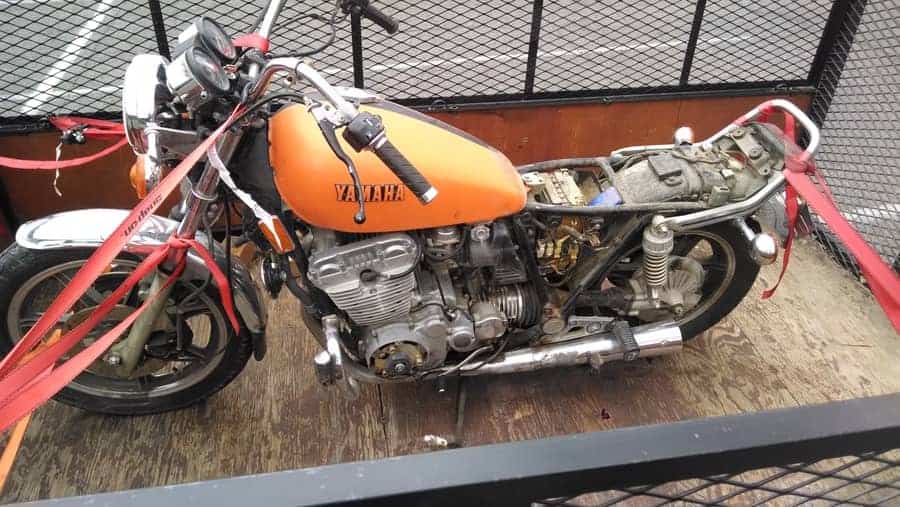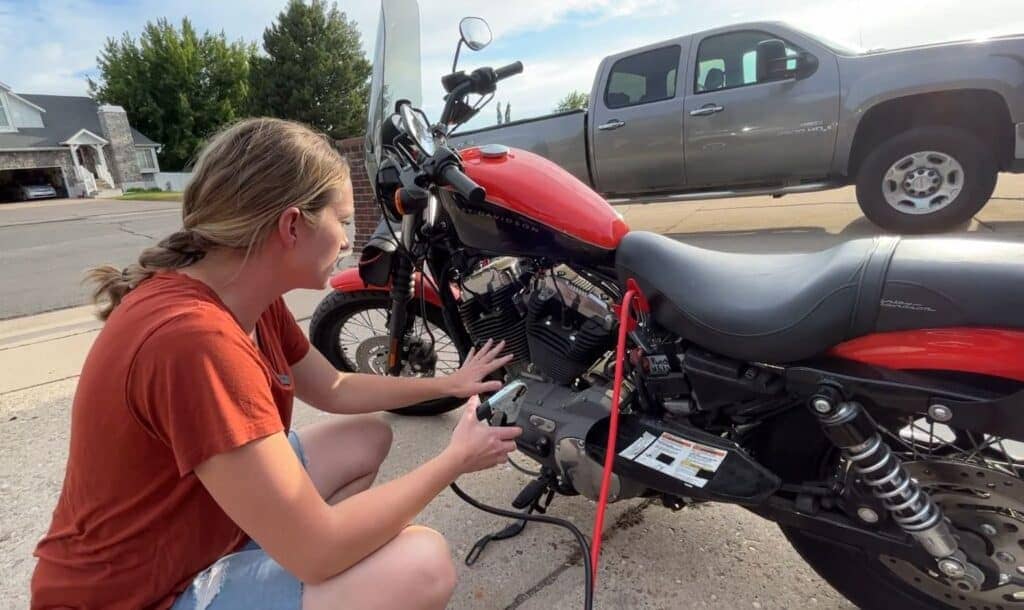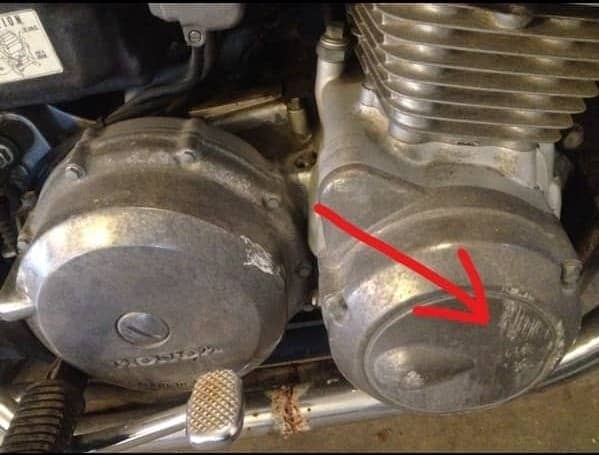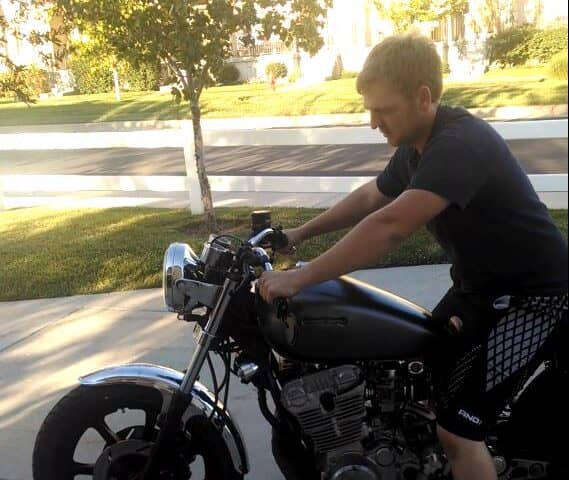
I have bought and restored over a dozen motorcycles over the past five years. During each motorcycle purchase, I learned something new about how to buy a project motorcycle and what to look for. I have certainly purchased my share of lemons, especially during the beginning of my motorcycle endeavors, but I quickly learned what to look for and soon discovered myself finding diamonds in the rough.
Now for the anticipated details. You’re with the owner looking at the motorcycle. What an exciting time! Keep in mind, if you are looking for a project motorcycle, the motorcycle will not be perfect (which is why you’re hopefully getting a good deal on it!). Don’t be nit picky about everything. Every used motorcycle will have at least some little dysfunctions.
There are several things you need to look for when looking to purchase a project motorcycle. Be aware of your willingness and expertise that you can apply to your project motorcycle. Ask the seller about the history of the motorcycle as well as for proper documentation. Check for signs of it being in an accident and calculate how much it will cost to fix everything it needs.
You may be stressed or even a little anxious if this is your first time buying a project motorcycle. A lot of people have been where you are and ended up rebuilding some beautiful motorcycles. You’re taking the first steps to such an outcome. Keep reading for further details on what you should look for when buying a project motorcycle.
Be Aware Of Your Willingness and Expertise
The internet and YouTube are amazing tools to use when learning how to fix, well, anything really. If you have the drive, you can fix and restore a motorcycle with no experience (for more info on this, check out our article Do I Need Experience To Restore A Motorcycle?).
At the same time, please be aware of your expertise and experience level. For some, small problems may be way over their head and for others, an engine rebuild isn’t a problem. Before you look at a bike, make a conscious effort in knowing what you are and what you are not comfortable fixing.
You do not want to get into a project bike, get halfway through and realize you’re over your head, then have to sell the thing for less than you bought it for in addition to a damaged ego. You know you can do this, just make sure your doubts will let you do it too.
If you’d like to get into rebuilding motorcycles, I have created an entire video series on how to restore a motorcycle from start to finish. This product was created with beginners in mind with the intent to answer and guide you through all the questions you may have during this process. This series also includes in depth videos on hard to tackle components such as carb rebuilds, body work, and electrical. Click here for more information if you’re interested in viewing this helpful video series!
Does The Seller Have A Title?
This is the very first question you should always ask the owner. It is okay if the owner has a lien on the title; this just means you will need to go to the bank with him/her to complete the transaction and have the bank transfer the title into your name. Otherwise, if the owner does not have the title, walk away immediately! You should never purchase a motorcycle without a title. Let me give you an example as to why:
When I was in college, I had a good friend of mine who purchased a motorcycle. He had never purchased one before so he didn’t know much about what to look for. The seller reported he had a title for the motorcycle but didn’t have it in hand. My friend bought the motorcycle with a promise from the seller that he would send the title to him “in a few days.”
Guess what? A few days came and went. No title. My friend attempted to contact the seller with no response. After no success with contacting the seller, he tried to make a new title, but to his horror the DMV notified him that the motorcycle still had a lien on it, several hundred dollars in fact.
My friend initially paid over $1,000 for that bike. He had to fork up an extra few hundred dollars to actually own the motorcycle and pay off the lien. It was a nightmare for him. He ended up selling the motorcycle to another friend of mine for $200 because aside from the title issues, the motorcycle itself had multiple problems that were over his head.
If you ever buy a motorcycle without a title, you risk the chance of a lien on it which will force you to pay the remaining balance if you wish to own it (because we all know the seller won’t pay it).
The second risk you run into with buying an untitled motorcycle is that you may have purchased one that is stolen. Guess what happens if you buy a stolen motorcycle? It’s confiscated and you’re out the cash you just paid. The seller pockets your money and chances are they’ve run to the next state over.
Here are a few other things to check on the actual title itself: make sure it does not say “duplicate” on it as that is not the original title which could have been pawned off to a title company for a loan.
Make sure the VIN numbers match between the title and the motorcycle (remember, the title goes with the motorcycle frame), and make sure the person’s name you’re buying the motorcycle from has their name on the title. If it’s not, they legally cannot sell you the motorcycle. See my article here to learn more about buying a motorcycle without a title.
Does The Motorcycle Run?

Alright, if you’re at this point, that means the owner has a title ready to give to you if you purchase the motorcycle. The next thing to consider is if the motorcycle runs. You may be surprised with this, but I’ve never been too worried about purchasing a motorcycle if it does not run.
Remember, this is a project motorcycle you are looking for, there will be problems. Most of the time, the issue is not the engine. I’ve found that about 90% of the time the reason a motorcycle does not start or runs poorly is because of clogged up carbs (which is a very easy fix).
If this is your first project motorcycle, it’s still okay to buy one that’s not running, but if you’re more comfortable buying one that’s already running then that’s fine too. Go with your gut feeling and your comfort level. Don’t take on more than you think you can handle; you want this to be a fun and positive experience!
What Are The Issues The Owner Is Aware Of?
Hopefully the owner of the motorcycle is honest, but don’t count on it. People will usually fib a little when they’re trying to sell something. However it doesn’t hurt to ask what problems he/she is aware of that the motorcycle has. They may not tell you every single issue, but they’ll at least tell you some of the biggest issues.
Think about the issues it has and again consider your experience level. Is that something you can fix yourself? How expensive would it be to take it to a shop and have them fix that problem?
The Last Registration And Why They Stopped Riding
If it’s been a while since the motorcycle was registered, this shouldn’t be much of a cause for concern. This question is a sneaky way to find out other problems the motorcycle may have that the owner didn’t initially discuss.
A lot of my project motorcycles were motorcycles that had been sitting in fields for years, so seeing any form of registration was essentially impossible in those situations. Often times people stop riding their motorcycles because they can’t get it started and don’t want to bother with fixing it (again, usually the carbs).
The Motorcycle’s Reaction While Rolling It
Put the motorcycle in neutral and roll it while it is turned off. If it rolls easily then that’s a good sign. Transition into first gear; if it still rolls without pulling the clutch handle, then you have a clutch or transmission issue. If you are worried about a transmission issue, calibrate your willingness to repair it yourself. It may be worth replacing the whole engine which, with older motorcycles, really isn’t that expensive.
Also check both tires while you are rolling it. Do either of them wobble? This could be a sign of a hard collision.
Signs Of The Motorcycle Being Tipped Over

I once was selling an old motorcycle I restored and flipped. The man came to my house, asked all the questions, did his look-over and decided to buy it. We visited for a little while and I quickly found he was quite the experienced motorcyclist.
He then gave me the cash, I gave him the title. He got on the motorcycle, started it up, pushed up the kickstand and……..tipped the motorcycle. We wiped up the gas and oil that had leaked out, examined the motorcycle and found a few scratches and a bent handlebar.
No matter, the guy drove it home on the freeway for thirty-plus miles with zero problems. It happens, so don’t sweat it too much if your potential motorcycle shows signs of being tipped.
There are two types of motorcycle riders: ones who have tipped a motorcycle or ones who will tip a motorcycle.
If you’re looking for a project motorcycle, chances are the motorcycle you’re interested in has been tipped. This should not be cause of alarm and should certainly not turn you away from buying it.
The reason you need to look at this is to see the amount of damage the tips have caused such as:
- a gas tank with large dents or long deep scratches
- bent foot pegs
- bent or broken fins on the engine
- any scratches on the painted metal or anywhere on the engine that are of notable size
- damaged crankcase
- scratched air intake (if it’s one that pokes out of the side of the motorcycle)
- bent throttle, brake handle, and/or clutch handle
- bent or crooked handle bars
For more information on this, check out our article Is It Bad To Lay A Motorcycle On It’s Side?
How Long Has The Seller Had The Motorcycle?
Many times I’ve purchased motorcycles from the only owner the bike had. The owner got the motorcycle when they were young and just hung on to it through their middle aged years. I love when I run into this situation as it gives an extra sense of nostalgia.
I have also run into a few owners who have owned the motorcycle for a year or less. In this situation, I like to ask a few more questions as to why they had it for such a short amount of time.
Try to dig a little deeper. Maybe they thought they could fix it up but never gave it the time of day it deserved, or maybe there’s a bigger problem. It’s okay to ask a lot of questions because this is a big investment.
The Motorcycle’s Worth After Working On It
This may be a hobby for you that you’ve either been doing for a while or you’re just getting started with. It’s a good idea to do some math when you purchase a project motorcycle. How much is the purchase of the motorcycle? How much do you estimate the repairs will be?
With those two prices combined, will your motorcycle be worth 75% of the total amount of money you put into it? For example, if I buy a motorcycle for $1,000 and know I will need to put in another $1,000 to fix it up, will it be worth $1,500 when I’m done?
Even if you’re not planning on selling the motorcycle right away, you still need to be smart with your money in case a situation arises and you have to sell your bike.
If you’re interested, check out my list of recommended tools that are essential when working on a motorcycle.
How Does It Sound When You Start It?

If the motorcycle supposedly runs, hopefully you contacted the owner beforehand and requested they not warm the motorcycle up, meaning the owner didn’t start it up before you got there. How easy is it to start? Once it does start, how does it sound? Is there any backfiring?
You’ll be able to calibrate some initial fixes a motorcycle will need simply by assessing how it starts up. A poor startup could indicate an old/bad battery or carbs that need to be cleaned.
Does The Engine Make Any Ticking Sounds?
If you’re able, take the motorcycle for a spin. It’s good to get familiar with how well the clutch works, how well the brakes works, and altogether functionality of the motorcycle. You should especially listen to the engine and any ticks it may have. If you do hear any ticking, that’s a sign the engine may go out soon.
Negotiate with the seller on this. Inform them of the engine tick and request a lower price. The reason I don’t discourage you from buying a project bike with a bad engine is because if this motorcycle is a common one, getting a working donor engine for it is only a few hundred dollars. If you can talk down the price that much, then it has paid for itself.
It’s okay to not buy the motorcycle right away. If you need to think about, tell the seller you will contact them within the next day or two.
Before You Go
There are a few things you’ll need to take care of before you even look at the motorcycle. First thing, never buy a motorcycle unseen. Always look and examine a motorcycle before you buy it with your own eyes. If you are unable to be present during a motorcycle transaction, be sure to send a trusted family member or friend who is knowledgeable in what to look for.
Second, print out a motorcycle bill of sale to have the seller fill out if you end up purchasing it. If you forget the bill of sale but you have a piece of paper and a pen, you may write out a bill of sale yourself.
Within the bill of sale, be sure to include your name and address, the seller’s name and address, motorcycle make, model, and year, motorcycle vehicle identification number (VIN), the date of transaction, how much you bought it for, and signatures from both you and the seller. Here’s an example of how to write it out:
MOTORCYCLE BILL OF SALE
Seller’s name and address:
Buyer’s name and address:
Motorcycle make, model, and year:
Motorcycle VIN:
Date:
Price:
Seller’ signature:
Buyer’s signature:
You can click here to download a free printable PDF version of this Bill of Sale.
Third, contact and make an appointment with the seller to view and test out the motorcycle. Make sure you schedule a time during the day light. I’ve made the mistake of looking at motorcycles at night in which I ended up purchasing, only to find scratch marks, handle bar bends, etc. that I didn’t see because it was too dark.
Set enough time aside in your schedule to be there for at least an hour. The last thing you want to do is make a hurried purchase and regret it later. You don’t necessarily need to take a whole hour to examine the motorcycle, but I’m always put at ease knowing I have the extra time for a thorough examination if needed.
Lastly: If the owner reports the motorcycle is running, request the owner to not run it before you get there. You want to make sure you initially see the motorcycle while it’s cold (meaning it hasn’t been turned on for at least a few hours). This will give you a better idea of what the motorcycle will be like every time you go to start it up after it’s been sitting for a while.
Watch our YouTube video for more details on what to look for when buying a project motorcycle:
Conclusion
If you were able to go through this whole list while investigating a potential motorcycle to buy and you feel good about it, then congratulations on your new project motorcycle! Remember, restoring a motorcycle is nothing near the monster it is to restore a car.
Good luck on your project, I’m sure you’ll be pleasantly surprised with what you can create!
Related Question
How long can a motorcycle sit before the battery dies? The average motorcycle battery will die after 2 – 4 months without running. Newer batteries can last longer with an average of 3 – 5 months until dying whereas older batteries will not last as long giving it an average of 1 – 3 months until the battery dies while the motorcycle is sitting. For more info on this, check out our article here.
